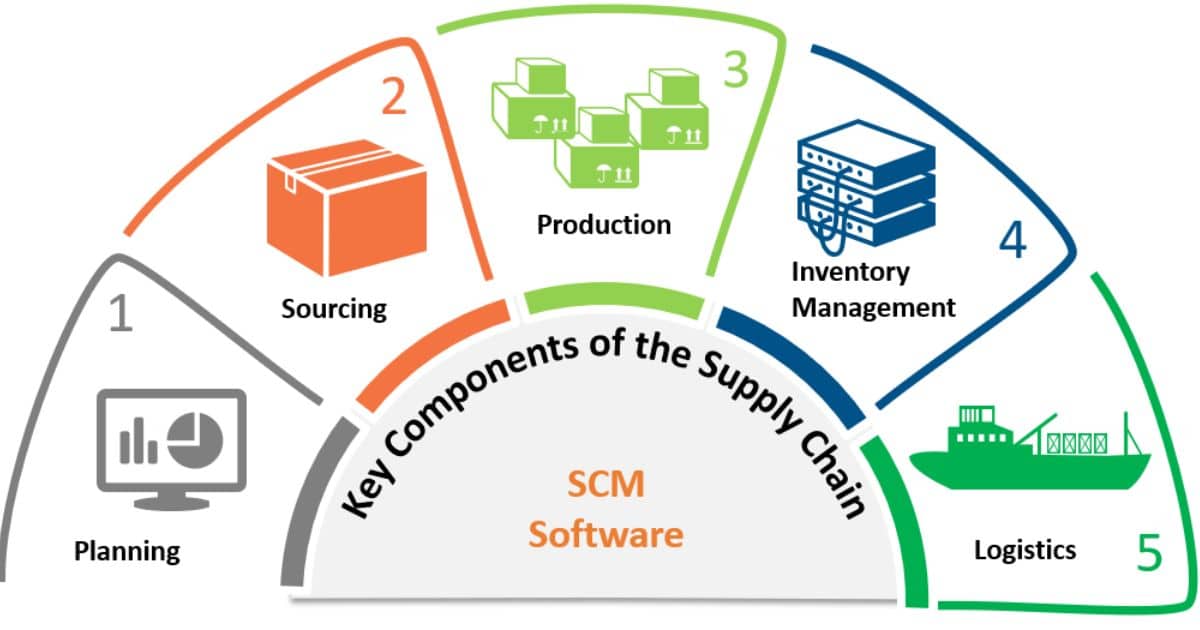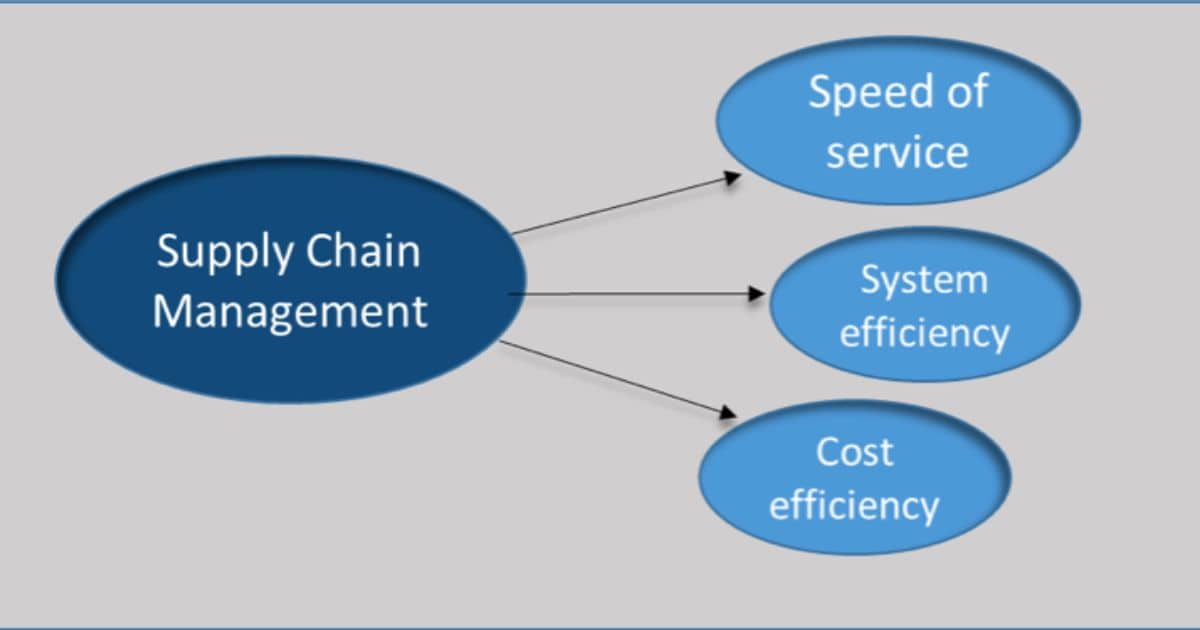Supply chain management is a broad term for a complex web of activities that work together to make sure that things and services get from where they are made to where they are bought. Purchasing, production, marketing, and shipping are the four main parts of supply chain management that hold it all together.
Purchasing means finding raw materials and parts and making sure they are available and of good quality. Manufacturing processes turn these sources into finished things, which is what production is all about. Distribution is the process of getting goods to different places in the supply chain, like stores and warehouses.
Logistics is the last part of the supply chain. It coordinates shipping, warehouse management, and the flow of information to make the whole thing work better. Organizations need to be able to successfully integrate and sync these four aspects in order to be flexible, cut costs, improve customer happiness, and gain a competitive edge in today’s fast-paced and global business world. Let’s talk about the different kinds of supply chains:
What are the Elements of Supply Chain Management?
Supply chain management involves several key elements that collectively contribute to the effective planning, coordination, and execution of the entire supply chain process. The primary elements of supply chain management include:
a) Integration

Integration is a key idea in supply chain management. It means that different parts of the supply chain work together and coordinate with each other so that the whole system is as efficient and quick as possible.
The goal of supply chain integration is to make a single, linked network that lets different tasks and functions, like purchasing, production, delivery, transportation, and information systems, work together without any problems. Integrated supply lines let you see inventory levels, demand forecasts, and production plans in real-time, which helps you make quick, well-informed decisions.
As part of this all-around method, wholesalers, dealers, and other important parties work closely together, building better relationships and improving the performance of the supply chain as a whole. Integration cuts down on delays, lowers costs, and makes it easier for the supply chain to adapt to changing market conditions by removing walls and encouraging contact between different functions.
Supply chain integration is a strategic must that not only makes processes run more smoothly but also makes businesses more flexible and successful in today’s fast-paced business world.
b) Operations
The second part was a focus on getting things done quickly and well. This means being very good at managing the making, storing, moving, and delivering of things and services. Operations include many tasks, such as organizing, planning, keeping an eye on, and managing the Supply Chain’s methods, resources, and performance.
Its job is also to make sure that standards for quality, safety, compliance, and ecology are met. Operations need to have a full knowledge of how demand and supply trends work, as well as the strengths and weaknesses of each Supply Chain partner.
To get the most out of your resources and processes, you need to keep evaluating and improving them. Use Lean Manufacturing Principles to get rid of waste and increase value.
- a) The benefits derived from Operations are manifold:
- b) Heightened customer satisfaction and loyalty are achieved by delivering quality products and services punctually.
- c) Competitive advantage is bolstered through cost reduction and profit augmentation.
- d) Operational efficiency and productivity see an upswing by optimizing output and minimizing input.
- e) Risks and uncertainties are mitigated, if not prevented, contributing to a more resilient Supply Chain.
c) Purchasing

Purchasing means getting things, services, or raw materials from outside sources. It is an important part of procurement that involves finding, evaluating, choosing, and buying goods or services that meet an organization’s needs. Purchasing is more than just making purchases; it also involves making smart decisions to get the best value for the business.
Choosing a seller, negotiating terms and costs, placing an order, and managing ties with suppliers are all important parts of buying. To do good buying, you need to find sellers you can trust who can give you high-quality goods or services at reasonable prices and on time. It also means thinking about things like how reliable the source is, the quality of the product, how long it will last, and whether the business is fair.
Strategic buying can make a big difference in an organization’s total success by lowering costs, raising product quality, and lowering supply chain risks. It requires areas like procurement, finance, and operations to work together to make sure that buying choices are in line with the overall goals and aims of the business.
d) Distributions
“Distribution” is the fourth part of the supply chain. This is the step where finished goods leave the factories or production sites and travel to different locations in the supply chain network before reaching the final customer. This part is very important for making sure that goods are supplied quickly to meet customer needs while keeping costs low and improving the overall performance of the supply chain.
Warehouses and other storage facilities are strategically placed to hold finished goods until they are shipped to their final destinations. This is called distribution. For orders to be filled on time and product amounts to stay at the right level, storage management must be done well.
This part is all about taking care of customer orders, choosing the right items from stock, packing them safely, and getting them ready to ship. For customers to be happy, orders must be filled quickly and correctly.
For efficient distribution, it’s important to be able to see how things are moving in real time. Technologies like tracking systems and data analytics help us figure out where and how things are doing during the marketing process.
Why is Supply Chain Management Important?

Supply chain management is very important because it makes sure that things and services get from where they are made to where they are bought. It improves working efficiency, cuts costs, and makes customers happier by optimizing processes like purchasing, production, delivery, and transportation.
Companies that handle their supply chains well can quickly adapt to changes in the market, keep their inventory levels low, lower their risks, and build strong partnerships and collaborations with their providers. Companies need to strategically use supply chain management to gain a competitive edge, meet their environmental goals, and change to the changing needs of the market in a business world that is becoming more international and competitive.
FAQ’s
Why is SCM important?
Supply chain management is vital for optimizing operational efficiency, reducing costs, and enhancing customer satisfaction by ensuring the seamless flow of goods and services from production to the end consumer.
What are the 2 types of supply chain?
The two main types of supply chains are the responsive supply chain, which prioritizes flexibility and quick response to changes in demand, and the efficient supply chain, which emphasizes cost-effectiveness and optimization of resources.
What does SCOR stand for SCM?
The SCOR (Supply-Chain Operations Reference) model serves as the standardized diagnostic tool for supply chain management, developed and endorsed by the Supply-Chain Council to provide a cross-industry process reference.
What is CRM or ERP?
Companies seeking to streamline and enhance their business processes have two options in the form of Customer Relationship Management (CRM) and Enterprise Resource Planning (ERP).
Conclusion
Supply chain management is a broad field that coordinates the smooth coordination of important parts such as operations, buying, marketing, and integration. Supply chain integration creates a single network that allows people from different roles and processes to work together to make decisions quickly and more efficiently.
Operations are all about carefully managing production and delivery while following standards for quality, safety, and ecology. When you buy things carefully, you get the best deals on goods and services and build long-lasting ties with suppliers. Distribution is a key part of making sure that finished things move smoothly through storage, order processing, and transportation operations.
Overall, a well-run supply chain is necessary for businesses because it increases customer happiness, gives them a bigger edge over their competitors, makes operations more efficient, lowers risks, and gets employees more involved. In a global and competitive world, businesses need to have good supply chain management in order to be successful, resilient, and able to adjust to changes in the market.











